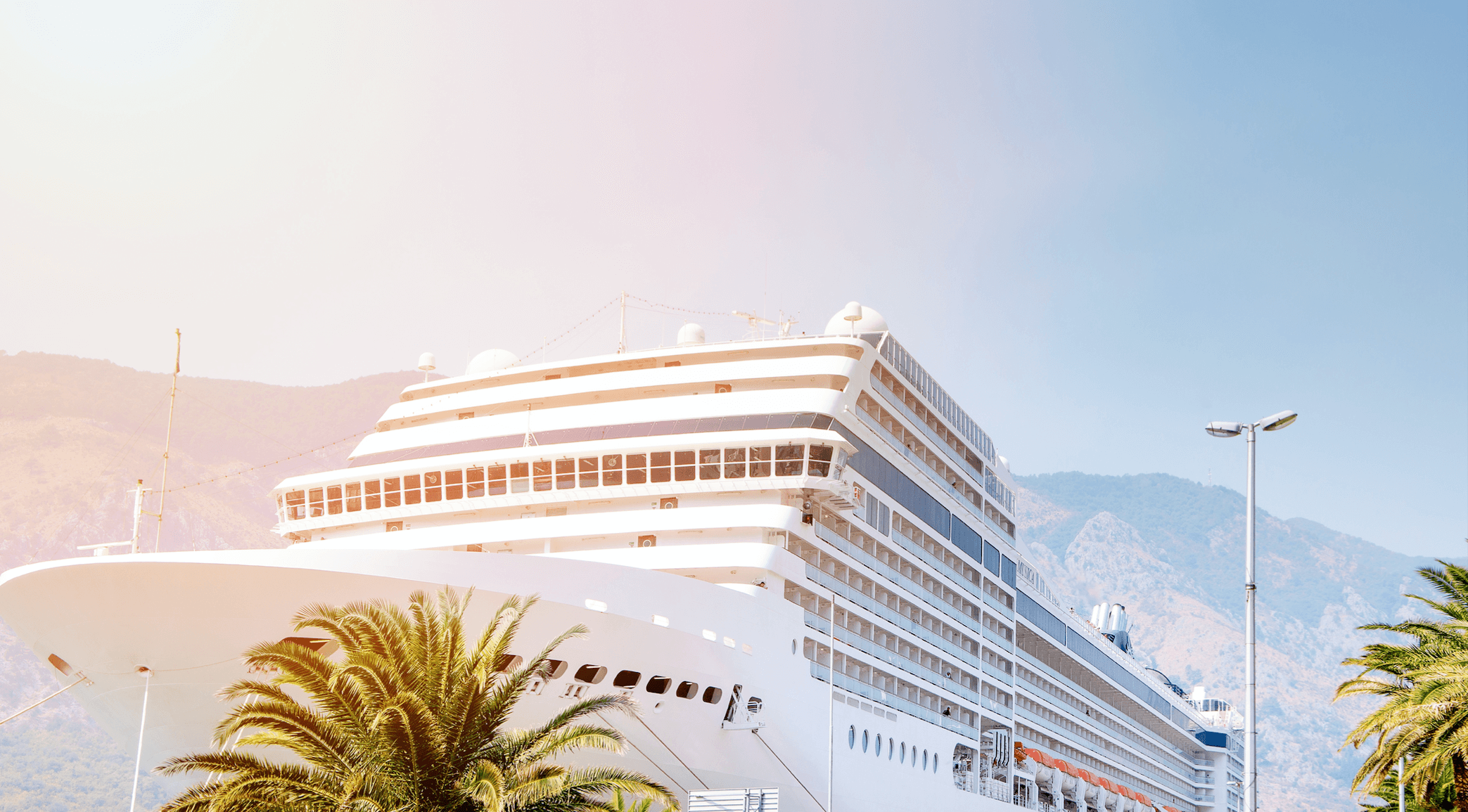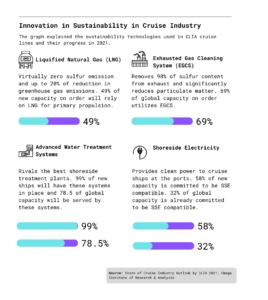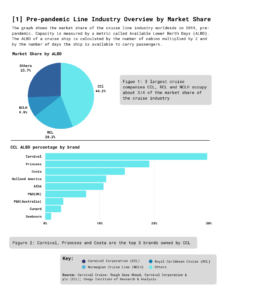- Industries
Industries
- Functions
Functions
- Insights
Insights
- Careers
Careers
- About Us
- Hospitality
- By Omega Team

The cruise industry is an important and growing industry. It contributed more than 55 billion USD to the U.S. economy in 2019. Appendix 1 and 2 show the general situation of the industry before 2019. The cruise industry suffered a huge loss from the COVID-19 pandemic in 2020, but now is the time to recover. As passengers return and airlines open up, many new technologies are being put into use to keep passengers healthy, facilitate boarding, and enrich the boarding experience with entertainment.
The Reopening of Cruise Lines
The UK-registered Diamond Princess, with a capacity of 2,670 passengers and 1,100 crew, was the first cruise ship to experience a major outbreak onboard and was quarantined in Yokohama, Japan, for about a month from February 4th, 2020. More than 700 people were infected and 12 died. Governments and ports banned many cruise ships from docking and advising people to avoid cruises, and many cruise lines suspended operations to slow the spread of the pandemic. On April 24th of 2020, more than 30 cruise ships confirmed Covid-19 positive cases on board. During this period, the cruise industry suffered huge economic losses, for instance, Carnival lost $13 billion last year.
As the tourism gradually reopens (2021), cruise companies have restarted operations in Europe and Asia late last year, and after months of preparations to meet stringent health and safety guidelines set by the Centers for Disease Control and Prevention, cruise lines have started to welcome back passengers for U.S. sailings, where demand is outweighing supply, with many itineraries, fully booked throughout the summer. Customer enthusiasm for the reopening has grown over time. Carnival said bookings for upcoming cruises soared by 45% during March, April and May as compared to the three previous months, while Royal Caribbean announced that all sailings from Florida in July and August were fully booked.
Even if cruise lines survive the crisis and bounce back, there are still big challenges ahead. With the pandemic far from over, the cruise industry still faces the risk of widespread infection. In this context, the use of advanced technology plays a key role in protecting people’s health. At the same time, some other technologies add more convenience and entertainment to travel.
Check-in Service
Most major cruise lines now offer online check-in, which means removal of paperwork and lines but get your boarding pass on your phone. With facial recognition and passport scanning, passengers can simply wave their phone at a scanner in the embarkation port, just like in an airport, and avoid any human interaction. Most of the major lines have been running with enhanced technology for a couple of years. Examples include Royal Caribbean’s fast track check-in; Celebrity’s facial recognition technology; MSC Cruises’ artificial intelligence system and Princess’ Ocean Medallion.
Health and Safety
Another possible change passengers might see are disinfection tunnels with thermal scanners and biometric systems. In Portsmouth International Port, in the U.K., thermal imaging cameras are introduced to test passengers’ temperature. The aim of these technologies is to give a ship’s medical team the information to decide whether a passenger should be allowed to board. Apple and Google both are developing track and trace apps, which can alert crew whether someone has been near an infected person.
Avoiding physical contact is a necessary measure for preventing population infection, including cleaning the rooms. This can be automated, and robots can be equipped with advanced disinfection tools.
Xenex, whose LightStrike Germ-Zapping Robots are already being used in hotels, restaurants, food processing facilities, and office buildings, and it has built protocols for cruise ships. The robots use high-intensity, broad-spectrum UV light technology that is uniquely lethal to microorganisms. The clean cycles are fast, allowing you to decontaminate a guest room in several minutes. Researches have shown its efficiency and effectiveness in high-standard hospital settings.
Smart Cruise Devices
Some cruise lines are investing heavily to ensure that their customers can enjoy smart cruising at its best through mobile apps and devices.
Princess Cruises’ OceanMedallion and MSC Cruises’ MSC gadgets are wearable devices powered by digital technology. Designed to make the onboard experience more seamless, passengers can also use them to book dining and shore excursions, check daily activities, share experiences – and even unlock their cabin door. Another MSC’s most novel addition is Zoe, an oceangoing voice assistant like Alexa and Siri, which is primed to answer more than 800 questions in seven languages. The cruise lines claimed that the positive feedback their wearable devices received had been particularly rewarding. Guests stated that their whole cruising experience, from embarkation to disembarkation, was far more effortless and personalized than any holiday they had been on before.
Entertainment
There is no doubt that technological innovation will be widely applied to entertainment to enrich passengers’ experience on cruise lines.
Passengers can play various kinds of interesting games through the virtual reality pavilions of MSC Cruises and Norwegian Cruise Line ships, using an X-ray vision style app to peer through walls into parts of the ship normally off-limits.
Royal Caribbean also uses the latest innovations in its shows to dazzling effect with choreographed displays of 60-strong drone clouds in ice-skating performances and 3D flying effects that involve a 30ft biplane soaring above the audience in one of its theatre productions. Celebrity Cruises has one of the most obvious technological first on its new Celebrity Edge and Celebrity Apex ships which have a “Magic Carpet” platform on the side of the ship that moves between decks doubling up as a platform for tender boats, a restaurant and a bar.
Large interactive touchscreens are increasingly appearing on ships as a way for guests to make reservations, find their way around or access the daily program to see what activities are taking place. Hapag-Lloyd Cruises takes it a step further with a “study wall” on its new expedition ships, enabling guests to look up information about destinations they’re visiting.
Sustainability
In addition to serving passengers, innovative technologies also keep making contributions to protect the environment. The cruise industry leads the way in the adoption of cutting-edge maritime environmental technologies. These technologies are explained in exhibition 1.
Exhibit 1: Innovation in Sustainability in Cruise Industry

Future Outlook
The latest pre-pandemic data confirms that the cruise industry plays an important role in the creation of jobs and economic opportunities for millions of people around the world. Despite the economic loss due to COVID-19, the industry has been showing its resiliency and optimism for the future. According to CLIA’s research, 74% of the cruisers are likely to cruise in the next few years. The cruise industry is a huge industry with international influence, generating a lot of jobs and income, and 58% of international vacationers who have never cruised are likely to cruise in the next few years. Passengers are also looking forward to the new cruise experience, including robust cruise line apps, wearables, smart rooms and additional entertainment.
Appendix


Subscribe
Select topics and stay current with our latest insights
- Functions